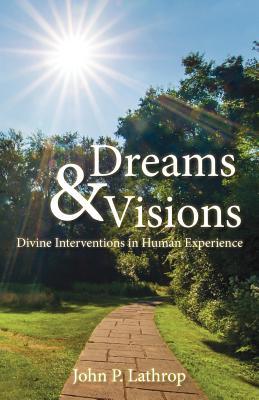An Introduction to Dreams and Visions in the Bible and Today
After we have considered the New Testament texts regarding visions, I will cite examples of dreams and visions that have taken place in recent times. In addition to looking at these accounts, we will note the things that took place as the recipients acted on the revelations they received. The examples in this section come from information supplied to me by people in my network of friends as well as the writings of a few more well-known individuals. I will close the book by offering suggestions of how we, in the West, may reclaim dreams and visions as legitimate communications from God.
As we embark upon this journey, I hope that you will keep your heart open to the fact that dreams and visions are two very real ways in which God can communicate with his people. I want to stress that I am not suggesting that believers should specifically seek these things, but rather that we should be open to them (there is a difference). What we expect, in some measure, determines what we will receive. Dreams and visions are biblical, and God says that they will take place in the last days (Acts 2:16-17). According to the writer of the letter to the Hebrews, the last days began in Christ.16 Hebrews 1:2 connects Christ with the last days. The last days will continue until the last day (John 6:39); we are thus living in the last days. Therefore, let us remain open to the possibility that we may experience dreams and visions in our lifetime.
This chapter is the Introduction to Dreams & Visions: Divine Interventions in Human Experience by John P. Lathrop and is reprinted here with permission.
In the New Testament a number of people received divinely inspired dreams and visions. Some of these individuals were leaders in the early church and others were not. Their experiences were unique, powerful and produced action. The Bible indicates that dreams and visions will continue to the present day. In this book you will find:
- Relevant texts regarding New Testament dreams and visions.
- Insights into what we can learn from each dream and vision.
- Reasons why we should expect dreams and visions today.
- Dreams and visions from the twentieth and twenty-first centuries.
- Accounts of what took place as people responded to the dreams and visions they received.
Notes
1 Gordon D. Fee and Douglas Stuart, How to Read the Bible for All It’s Worth (Grand Rapids, MI: Zondervan Publishing House, 1993), 18-19.
2 Ibid., 19.
3 Gordon D. Fee, Gospel and Spirit: Issues in New Testament Hermeneutics (Peabody, MA: Hendrickson Publishers, 1991), 119.
4 Ibid.
5 Craig S. Keener, Gift & Giver: The Holy Spirit for Today (Grand Rapids, MI: Baker Academic, 2001), 60-61.
6 Ibid.
7 See “Heather Mercer: On Reaching Muslims,” viewed December 3, 2011. [Editor’s note: The Voice of the Martyrs interviewed Heather Mercer in 2009 about reaching Muslims with the love of Jesus.]
8 Kevin Greeson, The Camel: How Muslims Are Coming to Faith in Christ (Arkadelphia, AR: WIGTake Resources, LLC, 2007), 11, 50.
9 Philip Jenkins, The Next Christendom: The Coming of Global Christianity (New York, NY: Oxford University Press, 2002), 7-8.
10 Jack Deere, Surprised by the Power of the Spirit (Grand Rapids: MI: Zondervan Publishing House, 1993), 14-15.
11 Ibid.
12 Robert Heidler, Experiencing the Spirit (Ventura, CA: Regal Books, 1998), 20.
13 Leland Ryken, James C. Wilhoit, et al., The Dictionary of Biblical Imagery (Downers Grove, IL: InterVarsity Press, 1998), s.v. “Dreams, Visions,” 217.
14 Ibid.
15 Ibid.
16 Craig S. Keener, The IVP Bible Background Commentary: New Testament (Downers Grove, IL: InterVarsity Press, 1993), 651.
Category: Living the Faith, Spring 2015



